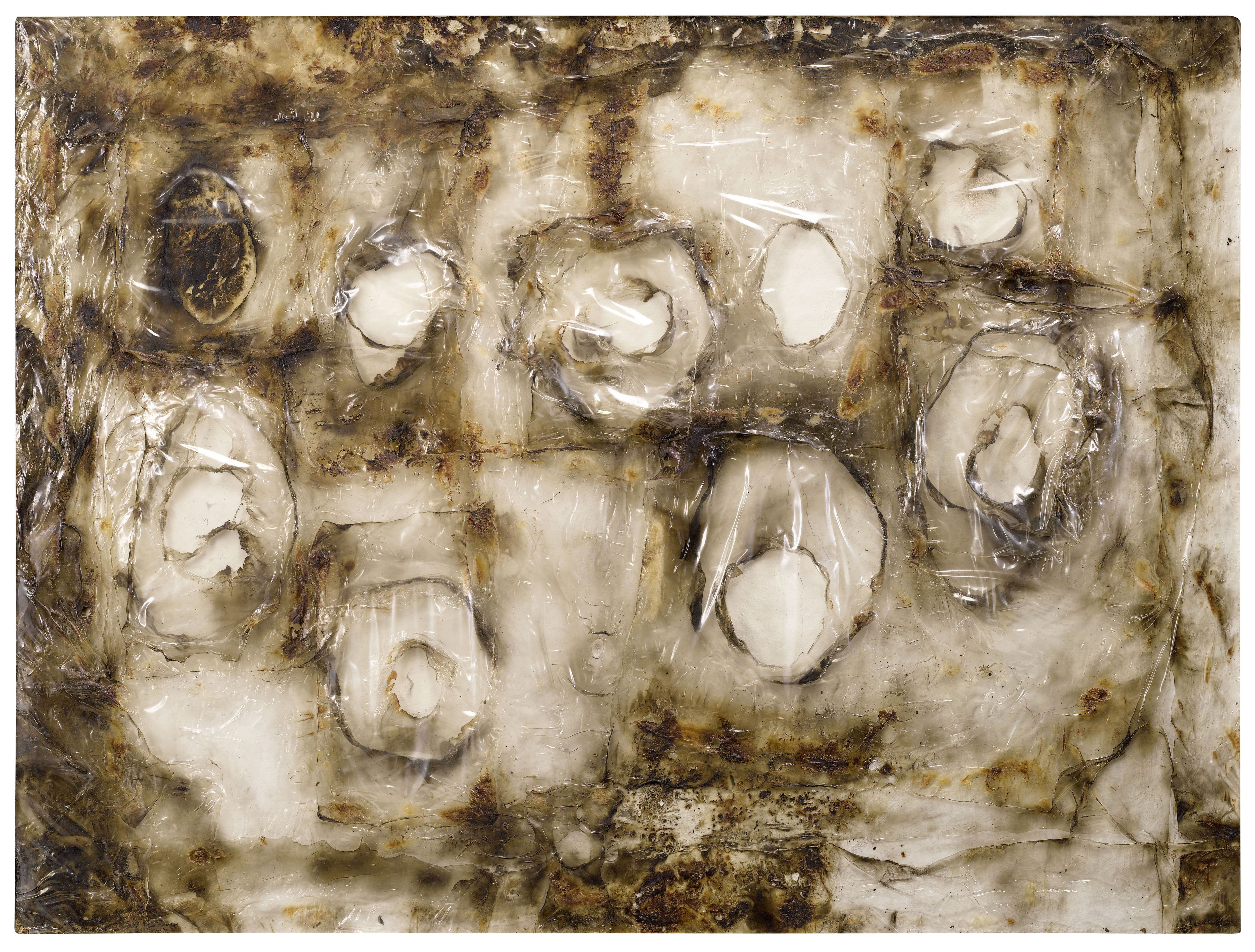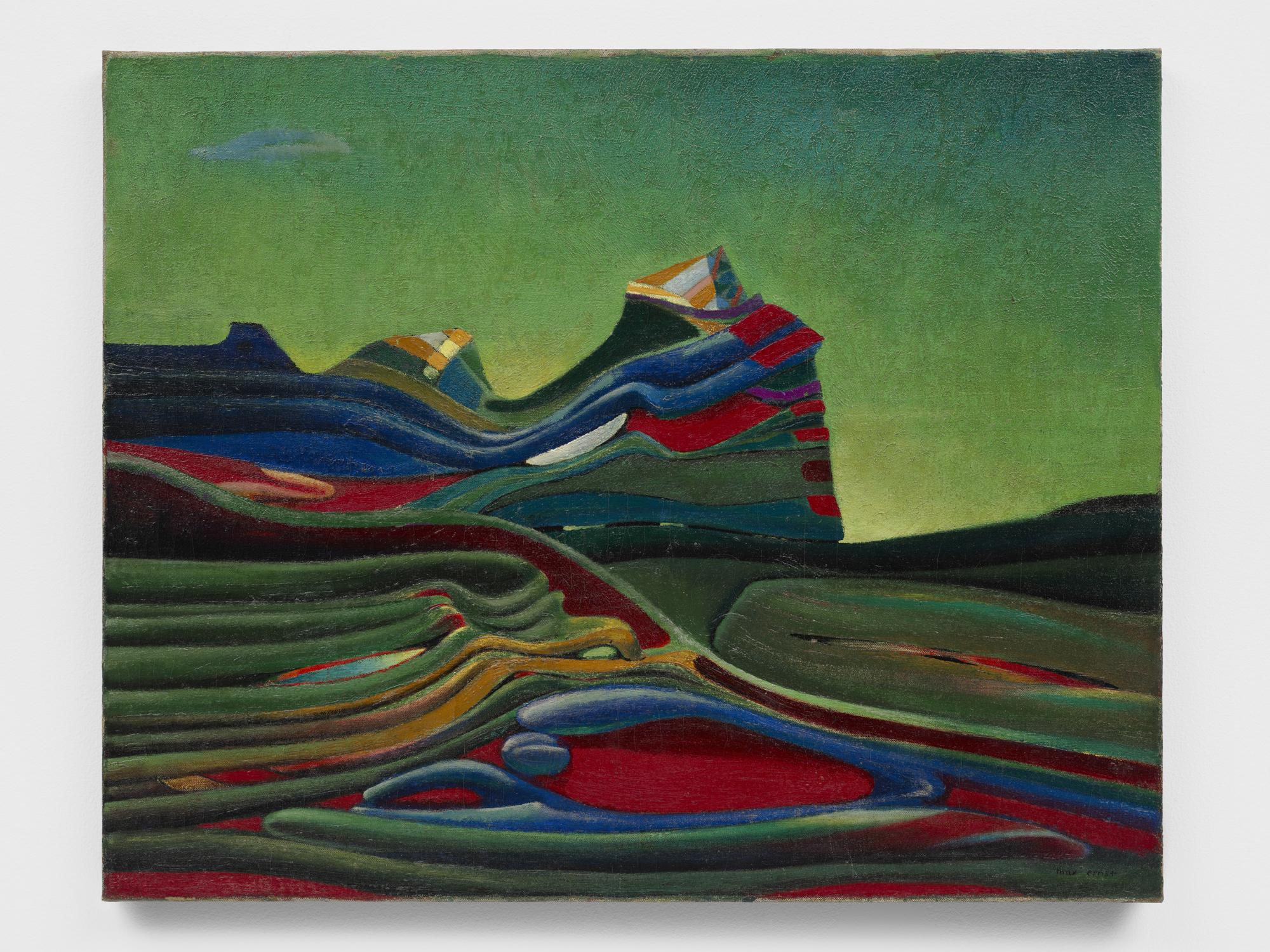Ernst, Miró, Burri
inherent qualities of materials, weaving through the rich tapestry of art history
Nahmad Projects is pleased to showcase a curated selection of works featuring three pivotal figures from the 20th century: Max Ernst (1891–1976), Joan Miró (1898–1983), and Alberto Burri (1915–1995). Although initially diverse in practice and subject matter, the presented works find unity in their profound connection to the inherent qualities of materials, weaving through the rich tapestry of art history.
Elevating each technique to the highest level of virtuosity, the current exhibition orchestrates a captivating interplay between the forces of chance and control. Burri, with his incendiary touch, sets surfaces ablaze, inducing mesmerising swirls and curls. Ernst, in contrast, sparks his forests and landscapes with enigmatic automatism, while Miró breathes life into his visions through joyous calligraphy. The outcomes birth new realms, characterised by craters, valleys, and rivers of forms seemingly emerging from the unknown, shaping intricate and beautiful topographies. All three artists have indelibly marked each other through their shared spirit of experimentation, inquiry, and keen observation of a world marked by seasons of war and peace.
Miró and Ernst’s friendship dates to Paris in the 1920s. Ernst drew inspiration from Miró when creating his famous imaginative figures that inhabit various wooded landscapes. During the same period, Miró explored similar themes, showcasing the mutual admiration they held for each other’s technical skills. In response, Ernst incorporated frottages and grattages into his work, collecting real rocks and pumice stones throughout his home, much like Burri, who used materials such as pumice, wood, tar, and volcanic rock. The resulting art forms take on organic shapes influenced by natural forces rather than deliberate artistic manipulation. This approach blurs the traditional boundaries between painting, drawing, and sculpture, as line, form, energy, and texture become integral components of the artistic process itself.
After his debut solo exhibition at Galleria La Margherita in 1947, Burri journeyed to Paris, where he encountered Miró’s impactful tar-paper collages. This encounter established a shared foundation between the two artists, marked by their commitment to movement, dance, and a dynamic approach to forms, ultimately challenging conventional notions of painting. Emphasizing the malleability of surfaces and the accumulation of raw materials emerged as a central theme for both, illustrated at Nahmad Projects through the juxtaposition of Miró’s 1960 burlap work ‘Femme et oiseau IV/X’ with Burri’s ‘Sacco’ from 1961.
In the interplay of Alberto Burri, Joan Miró, and Max Ernst, a nuanced tapestry of artistic exploration emerges. While each artist retains a distinct voice, their shared dedication to breaking traditional boundaries, experimenting with materials, and pushing the limits of form creates a fascinating dialogue. Whether in Burri’s tactile abstraction, Miró’s dreamlike symbolism, or Ernst’s surrealist visions, a common thread of innovation and mutual influence weaves through their collective artistic journey, enriching the broader narrative of 20th-century art.
1 Feb – 22 Mar 2024
2 CORK ST
LONDON W1S 3LB







